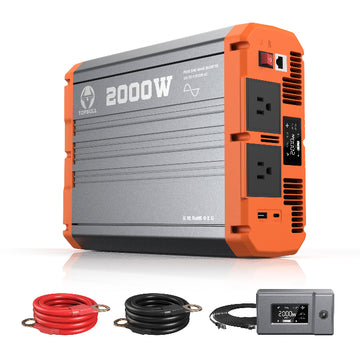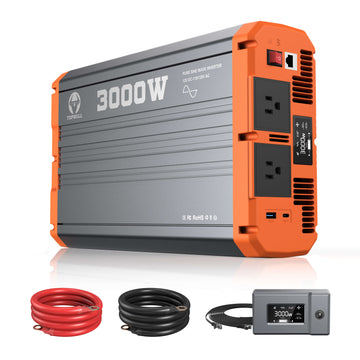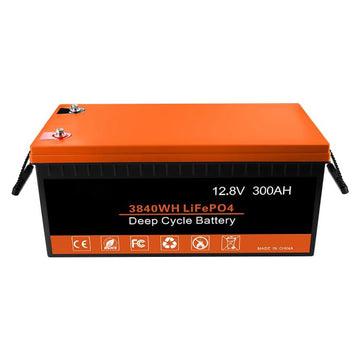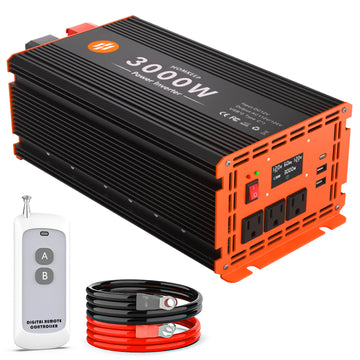Inverters play a huge role in our modern lives, have you ever wondered who invented them? How did this technology become an integral part of our lives? Let's delve into the history, concept, and future of inverters.
Understanding how inverters work
Most household appliances and electronic devices use alternating current (AC), while some power supplies produce direct current (DC). Early electric lighting used large transformers to convert DC to AC. But that required a lot of copper wire, which was expensive. So engineers invented what we know today as an inverter.
So how does an inverter work? First, an inverter receives a steady stream of DC power from a DC source, such as a battery or solar panel, and then rapidly turns the DC power on and off to create a periodically varying square wave or pulse signal. This alternating current called a "square wave," is not the smooth sine wave that most electronic devices require. To refine this square wave into a usable sine wave, inverters use filters or more sophisticated switching techniques.
Inverter evolution
Inverters have gone through several stages of technological innovation since their inception. Initially, inverters were bulky, expensive, and used only for specific industrial applications. However, technological advances have significantly reduced the size and cost of inverters, allowing them to be used in a wide range of applications.
1️⃣Early mechanical inverters
The first inverters were mechanical devices, usually using a rotating transducer to convert DC to AC. These devices were noisy, inefficient, and prone to wear and tear.
In the early days of power system development, direct current (DC) was the dominant form of power supply, but with the proliferation of alternating current (AC), the need for DC to AC conversion gradually increased. As a result, mechanical converters were developed to meet the need for AC power for electrical equipment. Typical of these devices are rotary converters and vibrators. These were commonly used in telegraphs, electrified railroads, and early lighting systems.
Principle of operation:
- DC power drives the electric motor, which drives the generator through the mechanical shaft.
- Generator converts mechanical energy into AC electrical energy output.
- The output waveform is irregular AC and requires additional equipment to smooth the waveform.
Disadvantages:
- Inefficiency: Friction and heat loss in the mechanical converter result in inefficient energy conversion.
- Frequent maintenance: Mechanical parts are prone to wear and require regular maintenance and replacement.
- High Noise and Vibration: Mechanical motion generates significant noise and vibration.
- Bulky size: limits use in portable and miniaturized applications.
2️⃣Solid state inverter
With the development of semiconductor technology in the mid-20th century, electronic components such as transistors gradually replaced mechanical parts. Inverters entered the electronic age, becoming more reliable and efficient. The use of transistors led to more compact designs and lower energy losses.
At the same time, inverters introduced pulse width modulation (PWM) technology. By adjusting the on and off times of the switches, an AC output close to a sine wave is produced. These inverters are commonly used in home UPS systems, small industrial equipment, and mobile power supplies.
Disadvantages:
- Early solid-state inverters had limited power capacity for high-power applications.
- Electronic components are more sensitive to temperature and overloading.
3️⃣Modern Inverter
With the rapid development of power electronics, digital control technology, and new energy applications, inverters are entering a new era of high efficiency, intelligence, and versatility. Today's inverters are capable of generating pure sine waves that are virtually indistinguishable from grid power. They are used in a wide range of applications, from solar power systems to computer uninterruptible power supplies (UPS).
Technical features
High-efficiency semiconductor technology:
- Uses high-frequency switching devices such as MOSFETs and IGBTs to support high power and high-frequency operation.
- Introduction of broadband materials (e.g. silicon carbide SiC, gallium nitride GaN) to further reduce losses and improve efficiency.
Digitalization and intelligent control:
- Uses a microcontroller (MCU) and digital signal processor (DSP) to optimize waveform generation and power management in real-time.
- Includes intelligent monitoring, remote operation, automatic fault diagnosis, and other functions.
Advanced waveform technology:
- Applying multi-level inverter technology, output pure sine wave with very low total harmonic distortion (THD).
Grid Connection and Energy Storage Function:
- Supports synchronized operation with the grid for two-way energy flow.
- Integrated energy storage function for supply and demand balancing or power backup.
Advantages:
- Ultra-high efficiency: Conversion efficiency is close to 99%, especially in new energy generation and energy storage systems.
- Intelligent and automated: supports remote operation and intelligent energy management.
- Modular design: easy to expand and maintain, suitable for a variety of application scenarios.
- Strong adaptability: Supports multiple input energy sources (solar, battery, wind) and complex loads.
Disadvantages:
- Higher cost, especially for high-end inverters with advanced technology.
Technology and application comparison for inverter evolution
| Inverter Type | Mechanical Inverter | Solid State Inverter | Modern Inverter |
| Core Technology | Converters, Vibrators | Transistors, PWM | MOSFETs, IGBTs,Digital Controllers |
| Pros | Realization of basic AC output | High efficiency, small size and high reliability | High efficiency, intelligent and adaptable to a variety of power inputs |
| Cons | Low efficiency, large size, frequent maintenanceLimited power and frequency range | Limited power and frequency range | High cost |
Learn More: How to Choose the Best Inverter for Your Needs?
Best inverter recommendations
Among modern inverter technologies, it is worth exploring TOPBULL's advanced pure sine wave inverters. Available in a wide power range (from 1000W to 5000W), our inverters provide stable and efficient power through pure sine wave output. This ensures compatibility with sensitive electronics and heavy equipment. Whether you're powering an RV, preparing for an outdoor camping adventure, or preparing for an emergency at home, TOPBULL inverters provide a robust and reliable power solution.
Ready to upgrade your power solution? Learn more about us.

The influence of inverters on modern life
Renewable energy
Without inverters, solar panels and wind turbines would not be able to power our homes and businesses. Inverters help make it easier for people to adopt cleaner energy sources, reduce carbon emissions, and mitigate the climate change crisis while reducing reliance on traditional fossil fuels.
Backup power
Inverters are critical to backup power systems. During a power outage, inverters can take power from your batteries and convert it to AC power to keep your essential equipment running.
Portable power
Portable inverters support the modern quest for a free and flexible lifestyle by meeting a variety of needs in situations where there is no fixed power source. Whether you are camping, traveling, or just need to carry power with you, the inverter in a portable mobile power supply can convert DC power from the battery to AC power to charge your devices.
Electric Vehicles (EV)
Technological advances in inverters enable higher performance and longer-range electric vehicles, further promoting the development of green transportation and providing a reliable solution to reduce urban pollution and fossil fuel consumption.
The future of inverters
With the rapid development of technology, the future of inverters is full of endless possibilities. We can foresee a future where inverters will become even more efficient and compact, especially in the context of the growing popularity of renewable energy systems. Innovations such as smart inverters are already making their way into homes and businesses, not only by efficiently converting DC to AC but also by having the ability to communicate with the grid and other devices.
These smart inverters can optimize power flow, manage energy consumption, and provide real-time data on system performance. This capability is particularly important in microgrids and smart homes, where efficient energy management plays a critical role in improving system efficiency and reducing costs.
FAQ
Q: Why is it called an inverter?
A: The term "inverter" originates from the device's original function in electrical systems. Early inverters were used to "invert" direct current (DC) into alternating current (AC). This inversion of current type is where the name comes from.
Q: Can an inverter work without batteries?
A: Yes, inverters can work without batteries in systems such as grid-connected solar systems that convert solar energy directly into usable electricity or feed it back into the grid.
Q: What is the typical lifespan of an inverter?
A: The life of an inverter depends on its type and use, but is typically between 5 and 15 years.
















